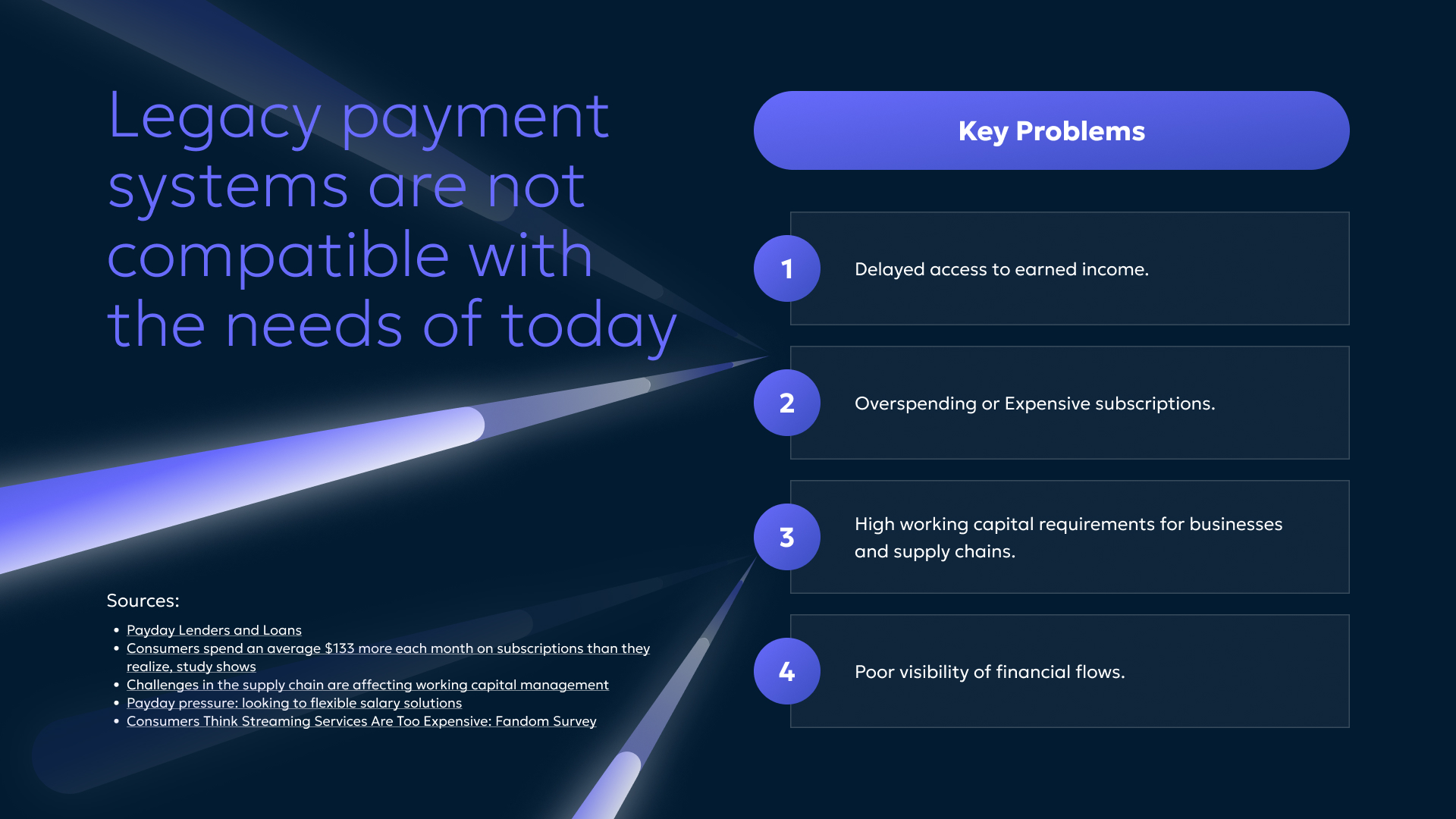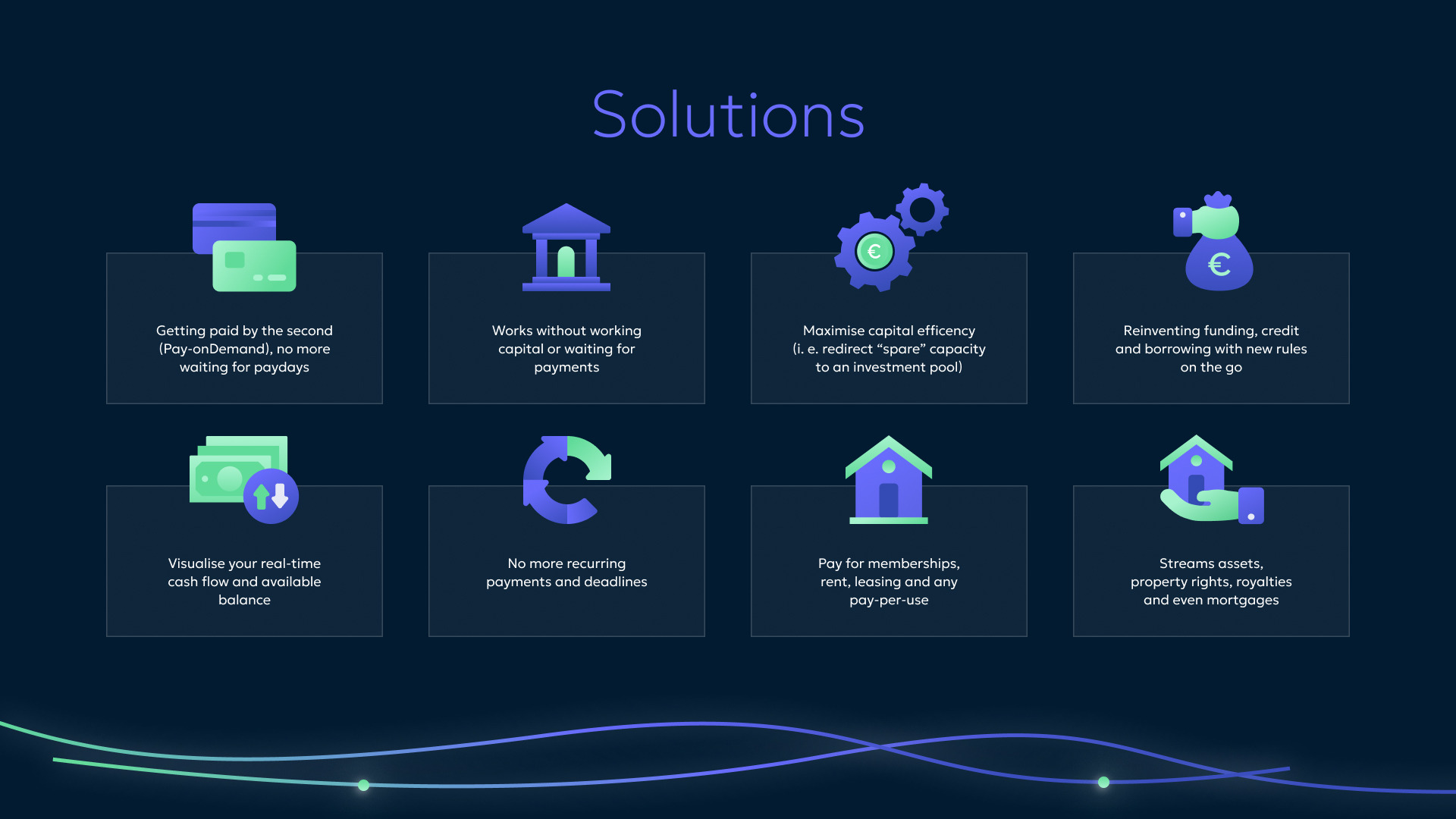#
1- What is the company's product or service, and how does it solve a problem or fill a gap in the market?
Streamable Finance has several products and services: DEX, Liquidity Pools, Token Swaps and SaaS models.

Some of the vast problems and key features provided are as follows:
#
Continuous Payment Stream
Streamable Protocol enables the creation of continuous payment streams, allowing for a steady and uninterrupted flow of money or tokenized assets. This solves the problem of traditional payment systems that require manual and periodic transactions, providing a seamless and automated payment experience.
#
Limitations and Fragmentation of Services
Streamable Finance addresses the limitations and fragmentation of existing services that facilitate transfers between different "money containers." By acting as a “super-layer, " Streamable Finance infrastructure enables interoperability between these fragmented services, making transferring funds or assets between different accounts or platforms easier.
#
Real-Time Value Exchange
With Streamable Payments, users can forward the received payment stream to another recipient in any desired amount, facilitating real-time value exchange. This capability enables immediate and seamless transactions, eliminating the need to wait for traditional payment cycles or clearance times.
#
Freely Moving Funds
During the flow of funds in a payment stream, the money is not locked and can still move freely between accounts. This feature provides flexibility and liquidity, allowing users to manage their funds effectively and utilize them for various purposes without restrictions.
#
Real-Time Cash Flow and Balance
Streampay allows users to net incoming and outgoing payment streams in real-time. This feature enables individuals or companies to monitor their cash flow and balance in real-time, providing accurate and up-to-date financial information. This real-time visibility enhances financial management and decision-making.
#
Capital Efficiency
By enabling individuals and companies to work or spend without waiting for incoming payments or relying on working capital, Streamable Finance maximizes capital efficiency. This feature is particularly beneficial for freelancers, service providers, or businesses with irregular or unpredictable cash flows, as it eliminates the need for significant reserves or credit facilities to maintain operations.
#
Liquidity Risk Reduction
The liquidity position of an account (e.g. treasury account of a company) is visible in real time with exact calculation of the liquidity coverage ratios;

#
Flow Control:
flows, being programmable, allow the current and future liquidity position of the account to be estimated with certainty with a significant improvement in control of the working capital and process management;
#
Credit Risk Reduction:
trend monitoring is real-time, thus reducing the risk of forecasts based on static flows;
#
Corporate Treasury:
significant improvement of treasury imbalances with reduction of costs for invoice discounting credit lines and optimisation of short-term lending;
#
Transparency and Traceability:
immediate feedback on defaults as the interruption of an incoming flow is monitored in real time thanks to the immutable entry on the DLT;
#
Real-time Balance:
netting between funds in the account and funds available as flows are offset in real-time.

